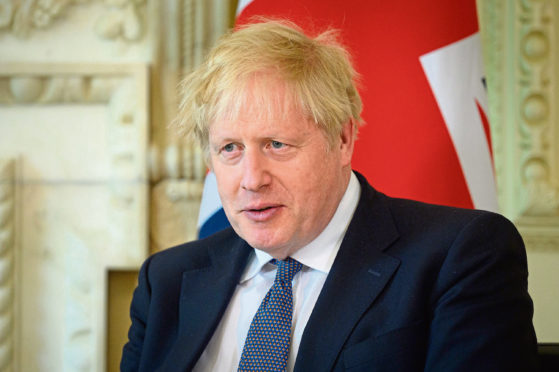
There is no such thing as a successful Conservative leader’s visit to Scotland.
That is the lens through which we should see last week’s visit of Boris Johnson to Scotland. However, some are more unsuccessful than others.
I was involved in visits to Scotland by Iain Duncan Smith, Michael Howard and David Cameron.
For Tory members and activists, who in the main look to London for political leadership rather than to Edinburgh, leader’s visits are the highlight of the political calendar.
To the media, leader’s visits are feeding time, and everyone generally gets their fill. But to the staff and the Scottish leadership, they are top of the risk register.
We operated on a “no detriment” principle – if we could escape a leader’s visit with merely a couple of flesh wounds, we would consider that to be a success.
We tried to control the visits as tightly as possible, although discussions with individuals in the UK leader’s office (who invariably became Scottish experts for the week) were often difficult.
Control, however, is not a word which often collides in the same sentence as the name Boris Johnson.
Mr Johnson is a winner in large part because of his flair, but the other side of that coin is the fact that his off-the-cuff nature has those around him continually walking on eggshells.
So it proved last week, when he made his remark about the head-start Scotland received in the fight against climate change when Margaret Thatcher closed coal mines.
There was nothing sinister about the remark; he would have thought very little of it when the words were emerging from his mouth, until he sensed the intake of breath from the assembled journalists.
And he will probably feel somewhat aggrieved that a remark which actually carries a large element of truth has caused such a stir.
But, that’s the key point. Rule 1 of any Tory leader visit to Scotland – Rule 1 of any Tory in Scotland in general, really – is that you don’t mention Margaret Thatcher. You simply file your views away in the toxic box.
Of course that can be frustrating to those who want to make the case for the benefits of Thatcherism to Scotland, but this is politics, and in politics there are ditches that are not worth dying in, especially when the subject is someone for whom only those over the age of 52 ever had the chance to vote.
This lack of understanding of what to say and not to say, what to do and not to do, is not simply the story of last week, it is the story of the last 20 years.
And it is perhaps something which the Scottish Conservative party needs to think about rather more deeply.
When you are in a situation where a visit to your territory, from your leader, is usually negative, sometimes neutral, and never positive, you probably have to start asking yourself whether you are hitched to the right wagon.
Scotland’s Tories have proven over the last few elections that they can effectively and efficiently gather large numbers of unionist votes with a series of single-issue anti-independence, anti-referendum campaigns.
But their support has a very clear ceiling of 25-30%.
To be in government in Scotland, they will need 35-40%, and nobody of sound mind thinks they can get there by wearing the brand of clothing they are currently contracted to.
The fundamental decision the Tories need to make – do they want to keep losing, or do they want to start winning – hasn’t changed, but weeks like the one just past should ensure that their choice returns to the forefront of their thoughts.
Andy Maciver is Director of Message Matters and former Head of Communications for the Scottish Conservatives.

Enjoy the convenience of having The Sunday Post delivered as a digital ePaper straight to your smartphone, tablet or computer.
Subscribe for only £5.49 a month and enjoy all the benefits of the printed paper as a digital replica.
Subscribe